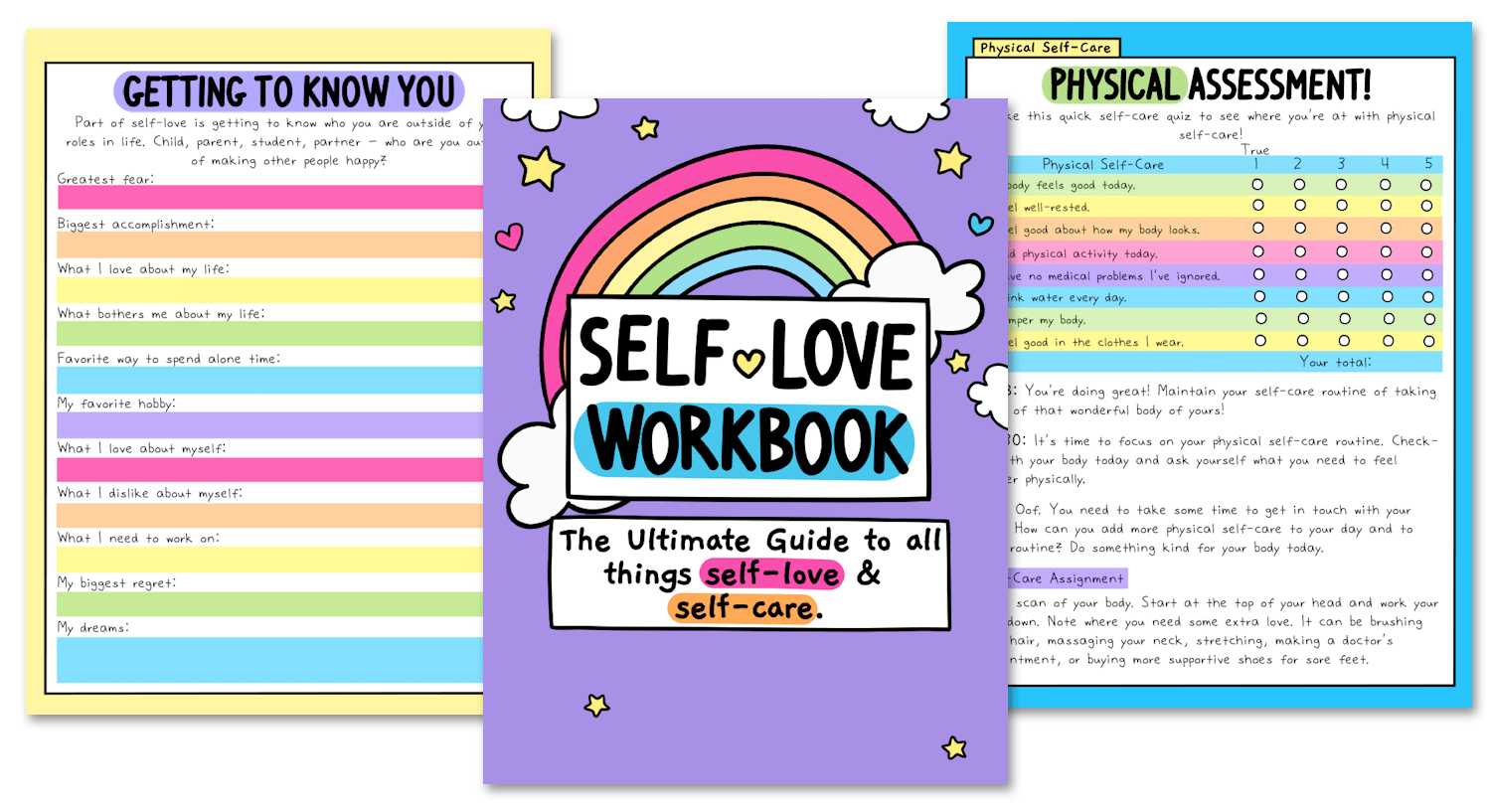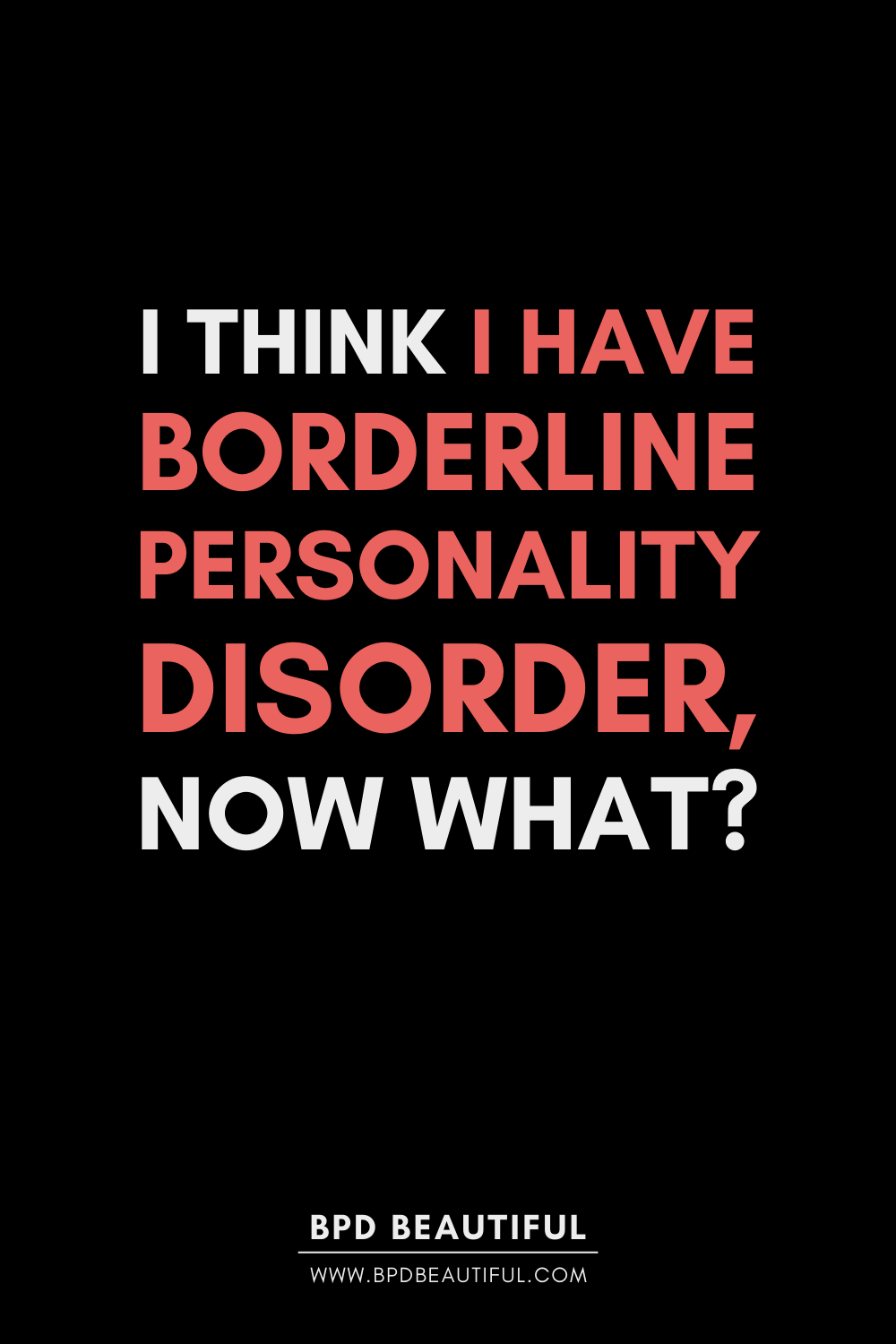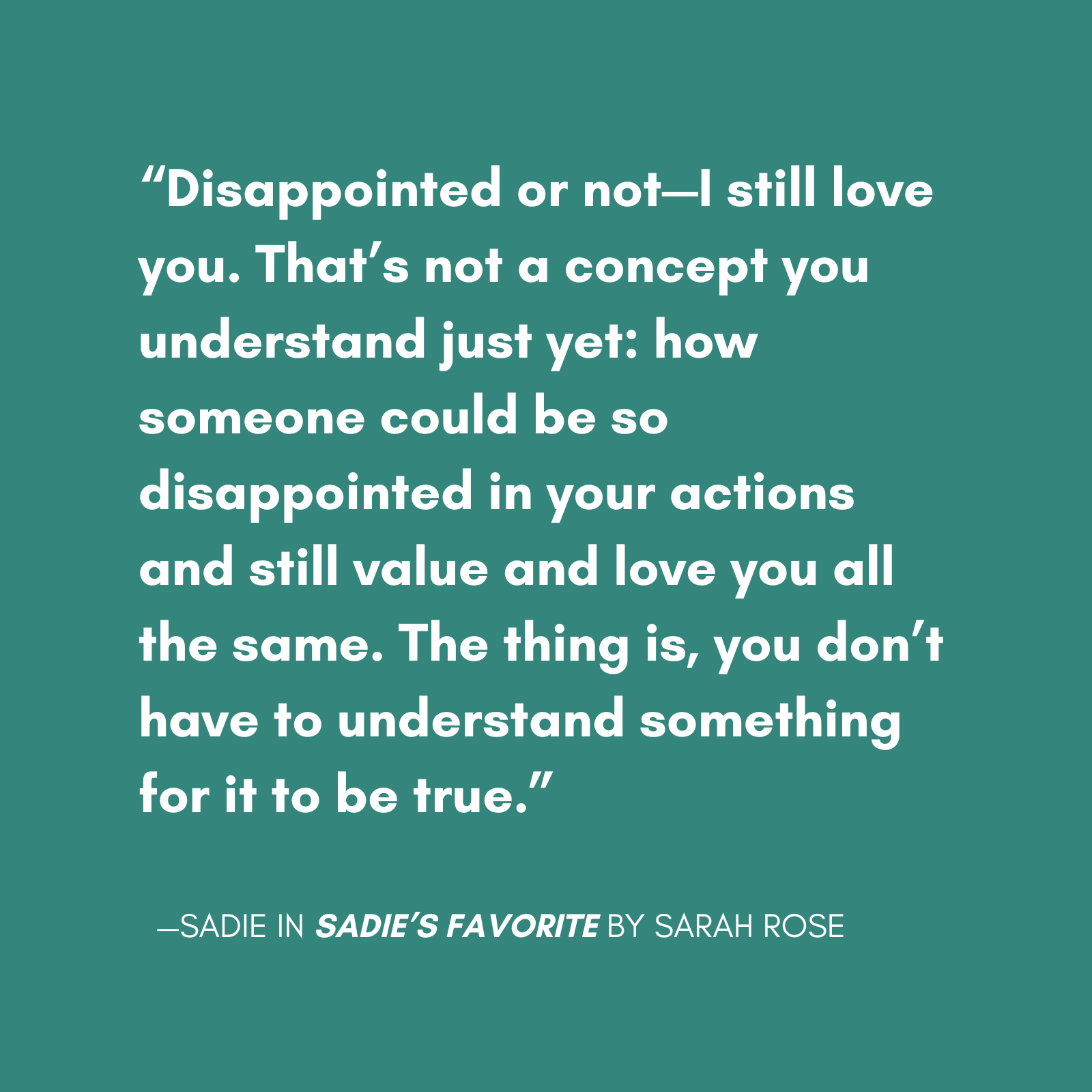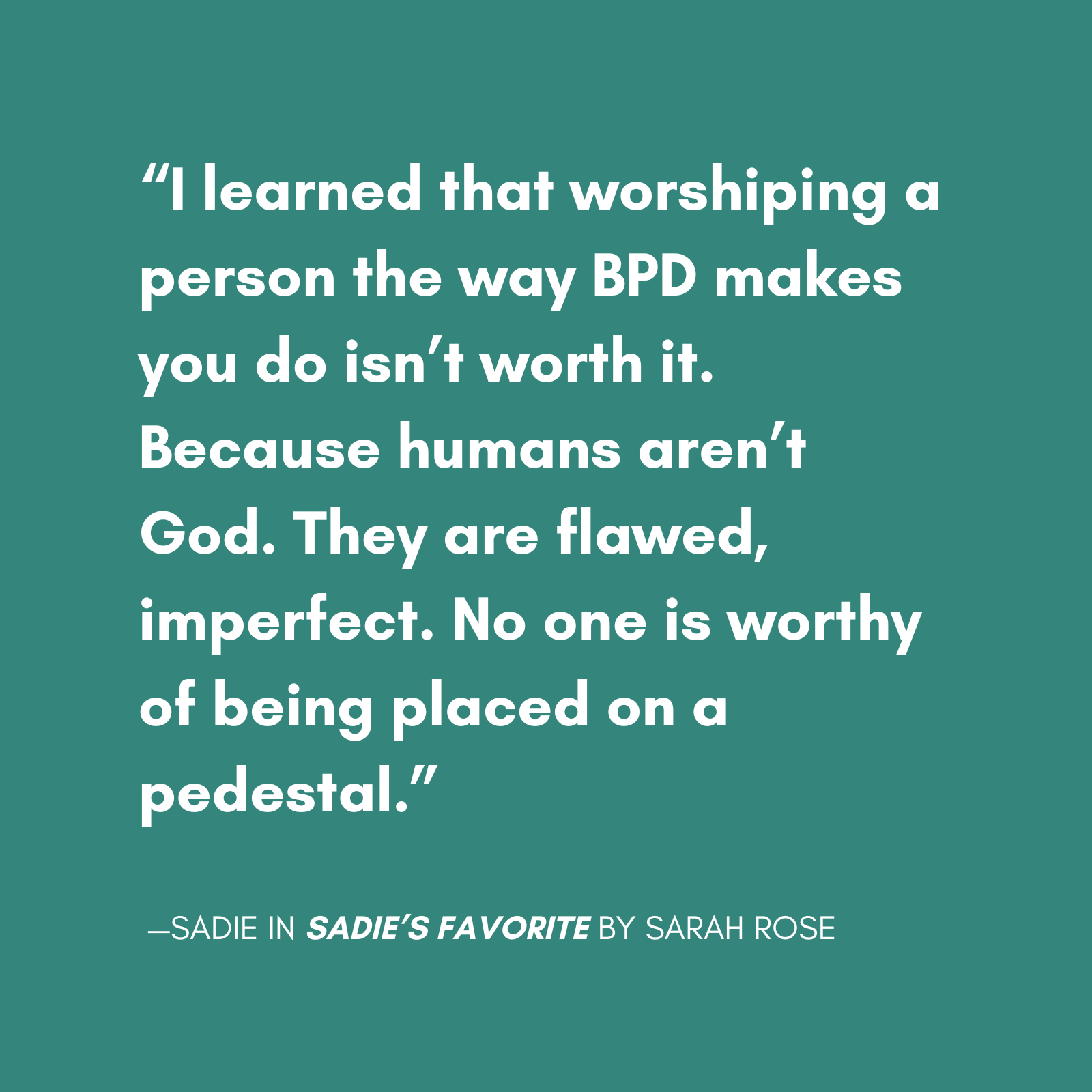“Do I Have Borderline Personality Disorder?”
You’ve stumbled upon a post about borderline personality disorder, or you heard about BPD in a movie. Maybe someone you know has it, someone very similar to you. Whatever the case may be, you’ve searched ‘do I have BPD?’ or ‘I think I have borderline personality disorder’ and now you’re reading this post to find out what to do.
First things first, don’t panic. BPD isn’t a death sentence. If you do have borderline personality disorder, you are not hopeless. In fact, you’re now one step closer to feeling better.
Read that again. One more time, so it sinks in.
I was in your place once: frantically searching up BPD blog posts, reading everything online about borderline personality disorder and reading others’ stories with BPD and comparing them to myself. It’s scary to think you might have a personality disorder.
The term seems foreign in your brain, much less like something you can say out loud. You may wonder if there’s something wrong with you. Or you may question yourself. Maybe you’re just overreacting. You don’t actually have BPD. There’s no way!
In this post, we’re going to go over every step you should take if “Do I have borderline personality disorder?” or “I think I have BPD” is going through your head.
Check for BPD Traits & BPD Symptoms
If you’re thinking, “Do I have BPD?” — it’s safe to assume, you’ve read over the BPD symptoms already. So you probably know there’s a fear of abandonment, a chronic feeling of emptiness, constant switching between idealization and devaluation, etc. etc. If you think you have BPD, you probably have at least 5 of those 9 main symptoms.
But did you know there are 4 different subtypes of BPD?
Some people in the BPD community argue that there aren’t subtypes of BPD, but the 4 subtypes are stated in BPD books and are promoted by actual mental health experts. Take Dr. Daniel Fox, for instance. The 4 BPD subtypes are featured in his “The Borderline Personality Disorder Workbook.”
Here are BPD traits of each subtype. Let’s see if you relate to any of them—
Quiet BPD Traits
- Passive even when wanting to lead
- Avoidance when overwhelmed
- Feels vulnerable, numb &/or empty
- Recurring complaints of illness, sometimes somatic
- Uses escapism to cope
- Harsh internal critic
- Hyper vigilant
- Struggles to talk about feelings
- Substance abuse
- Chronic hopelessness
- Fears being alone or pushes people away
- Implodes inward, rarely outward
“READING [SADIE’S FAVORITE] IS AN EMOTIONAL ROLLERCOASTER.” -BETA READER
Sadie’s Favorite by BPD Beautiful creator Sarah Rose is a novel that tells the story of a girl lost, a woman recovered and the trauma in between.
Petulant BPD Traits
- Constant need of validation
- Feels unworthy and unloved
- Self harm tendencies
- Angry outbursts
- Wanting others to feel guilty when wronged
- Needs to feel in control
- Proves others don’t love them
- Social anxiety
- Has an inability to express feelings
- Shuts others out of life
- Uses ultimatums
- Substance abuse or eating disorders
Self-Destructive BPD Traits
- Feels bitterness
- Believes no one cares, so they don’t care
- Prone to self-harm
- Suicidal behavior
- Looks for comfort through attention from others
- Self-sabotage
- Intense self-hate
- Unstable emotions
- Acts reckless due to lack of self care
- Feels they’re undeserving
- Often depressed
- Substance abuse
Impulsive BPD Traits
- Attention seeking
- Elusive, mercurial and mysterious
- Labeled dramatic
- Charismatic and charming
- Complaints of chronic or recurring illness
- Seeks thrills
- Manipulates for attention
- Easily bored
- High levels of energy
- Naturally flirtatious
- Impulsive risk-taking
- Prefers superficial relationships
If you relate to more than one BPD subtype, you are not alone. That’s very common and a big reason why some people in the BPD community don’t agree the subtypes exist at all. At the end of the day, BPD is still borderline personality disorder regardless of subtype.
Keep in mind, there are about 256 combinations of BPD symptoms to meet a BPD diagnosis so naturally, everyone with the condition will be unique.
Tell Someone You Trust
The first person I told when, “Do I have BPD?” went through my mind was my husband, Brian. Thankfully he was supportive and loving. He’d told me I’d get through this with him by my side. He reminded me I was strong and could overcome anything I faced. If you have someone who you trust in your life, that will be supportive, tell them you think you have BPD right away. Text it, call them, wait until you’re face to face—whatever is most comfortable for you.
I also told a friend I’d had for over 25 years that I thought I had BPD and was waiting for an evaluation appointment. That friendship quickly ended after I opened up and was diagnosed. Sadly there are people in this world who can not or will not tolerate the symptoms of BPD, or other serious mental conditions, in the people they love. A lot of times this happens because of underlying differences in beliefs about mental health, because of fear or because they have too much on their own plates that they can’t deal with the intensity commonly found in BPD relationships. Other times, those of us with conditions display too many toxic behaviors. We may push people away, manipulate or abuse them.
Whatever the case, if a loved one doesn’t show support in any way while you seek an evaluation…do your best to let it go, avoid opening up about it to them in the future and focus on your own self growth. Your behavior is the only thing you can learn to control. Not receiving support or the ending of any kind of relationship (if it came to that) is always painful, but those situations can also teach us a lot about ourselves and make us stronger.
My friend’s “abandonment” definitely hit me hard. It wasn’t easy experiencing a loss while I was also dealing with the shocking discovery of having BPD. But I got through it. It was a pretty toxic friendship anyway.

Join an Online Support Group
You may just be sitting on a self-diagnosis at this point in time, but talking to people with BPD can be helpful and eye opening. Maybe you’ll find people you really relate to, or figure out your answer to “Do I have BPD?” is probably no (but you should still seek an evaluation by a professional).
BPD Beautiful has a small online community on Facebook where you can find out more about borderline personality disorder, read others’ stories with BPD, get support for intense feelings and find other helpful resources. Join here.
Do BPD Research
Find out everything you can about borderline personality disorder. BPD Beautiful has a ton of great blog posts specifically catered to people with BPD. Some popular posts are: ‘What a Devaluing Split Looks Like for Borderline Personality Disorder’, ‘What Happens During a BPD Episode’ and ‘How I Overcome Regressions in BPD Recovery’
Other BPD blogs or resources outside of BPD Beautiful include Borderline Brooke, Talking About BPD, Borderline in the Act and The Mighty.
Seek an Evaluation
Like with most conditions, you can’t depend on a self-diagnosis for BPD. It needs to be determined by a mental health professional. I can not stress that enough. To get a BPD diagnosis, you need to book a psych evaluation with a psychiatrist, a mental health clinic or a DBT treatment center.
You can also get a psychiatrist referral from your family doctor.
Find a Treatment Program & Therapist
The best treatment for borderline personality disorder typically includes a combination of individual therapy and group therapy. Although it does not work for everyone—DBT, or dialectical behavior therapy, is known to be extremely helpful for people with BPD. It usually runs for at least 9 months and includes both individual & group therapy along with weekly homework & daily diary cards.
A lot of mental health practices will accept a sliding scale fee based on your income, if you don’t have health insurance or medicaid. There are also resources to find affordable treatment.
Open Path: is a nonprofit that provides a network of low cost or sliding scale therapists.
American Psychoanalytic Association: provides a number of low-fee clinics that offer mental health services for people with limited financial means.
You can visit Behavioral Tech’s directory to find therapists that are DBT certified. It’s best to try and find a therapist that specializes in DBT, CBT, personality disorders and/or trauma. Not all therapists will be a good fit for everyone so if it takes a handful of appointments with different therapists to find someone you like, that’s okay.

As a BetterHelp affiliate, we receive compensation from BetterHelp if you purchase products or services through the links provided.
You can also opt to take DBT classes online on DBT Academy, Online DBT Courses or Emotionally Sensitive. If you decide to take an online DBT class or course—it should be in addition to individual weekly therapy, NOT instead of. These courses do NOT offer therapeutic services and are simply ways for you to learn & implement life-changing DBT skills.
Should you take medication for BPD? Well, that’s up to your treatment providers and you. There is no medication on the market specifically for borderline personality disorder. However, some people with BPD take medication to help with specific symptoms of BPD or to help with comorbid conditions like bipolar disorder, depression, anxiety, ADHD, OCD, etc.
What if the mental health professional I find doesn’t believe me or take me seriously? I won’t sugarcoat it. This happens a lot more than it should. BPD stigma is still prevalent but that’s been gradually changing over the years. It will only continue to change if people speak up about it.
What age is BPD usually diagnosed? Borderline Personality Disorder (BPD) can affect people of any gender, age, race or ethnic background. The symptoms of BPD usually start to manifest during pre-teen or teen years and a diagnosis is often made when the person is in their 20’s, but sometimes people with BPD aren’t diagnosed until their 30’s, 40’s or even later. In some cases, people are diagnosed in their late teens. At the core of BPD is an intense fear of abandonment that could lead to certain distressing behaviors such as self-harm or suicidal thoughts. These feelings should be taken seriously if they arise regardless of age.
What is BPD usually misdiagnosed as? Borderline Personality Disorder (BPD) is often misdiagnosed or confused with other mental health conditions such as Bipolar Disorder, Major Depressive Disorder, Post-Traumatic Stress Disorder (PTSD), and Narcissistic Personality Disorder. Each of these diagnoses have similar traits to BPD but require different treatments. It’s important to get an accurate diagnosis from a mental health professional in order to ensure proper treatment. Untreated BPD can lead to serious consequences such as self-harming behaviors & suicidal thoughts or attempts. Contrary to popular belief, BPD is a treatable condition. Symptoms can be managed over time with the right therapy.
“Do I have BPD?” Conclusion
If you feel in your heart you relate to BPD and you have more than 5 symptoms, trust your gut and find another mental health provider for a second opinion. Brush it off as just a professional who is simply not as educated in this area of their field, and don’t lose hope. There are providers out there who regularly advocate for people with borderline personality disorder and there are experts researching & studying the condition to learn more about it.

The Self-Love Workbook
This 103 page digital workbook comes with three different PDFs – full color, a version with no color backgrounds, and a black and white version (to save on printing costs). You get access to all three and you can print whichever one works for you!
DOWNLOAD NOW FOR $10Each .pdf is capable of being filled in digitally. With Adobe on your desktop computer or on an app like XoDo for your phone, you can type your answers into the .pdf and save your progress without ever needing to print it.
BPD Resources
BPD Characters: Read the first 6 chapters of Sadie’s Favorite – an upcoming novel by Sarah Rose, creator of BPD Beautiful.
Get 20% off your first month of BetterHelp. Get matched with a licensed therapist within 48 hours. Subscriptions as low as $65/week, billed every 4 weeks. Cancel anytime.
Manage your BPD symptoms with a printable workbook.
See our recommended list of books about BPD.
Start a Discussion
What made you start thinking you have BPD? How do you relate to the symptoms of borderline personality disorder? Share your story in the comments! We love hearing from like minded individuals.
Pin This Post
Liked this post? Please help support BPD Beautiful and spread BPD awareness by pinning it on Pinterest.





